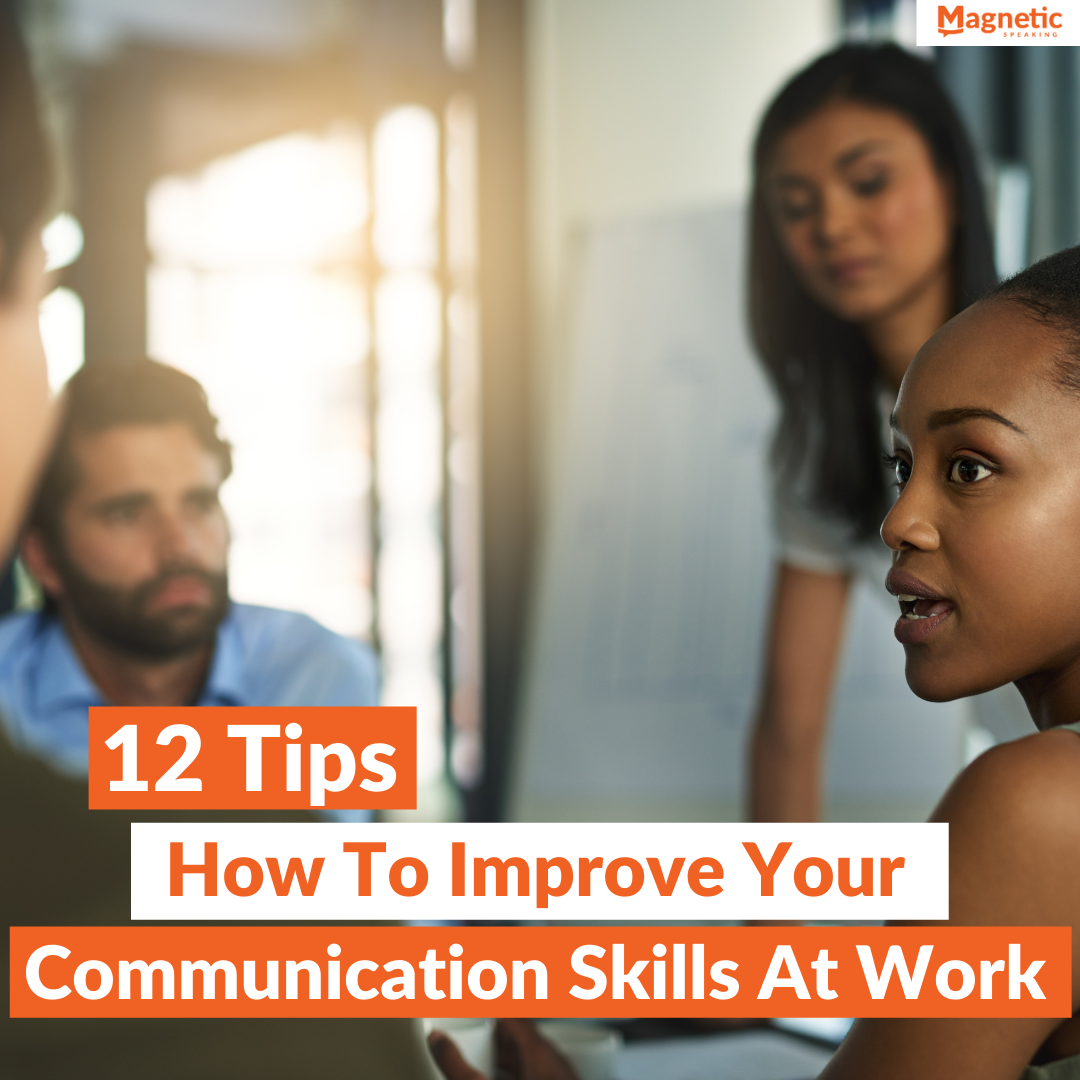One of our clients recently shared an email from her boss saying that she presented “like an executive” in her last presentation. She couldn’t believe the feedback.
Of course, we didn’t think it was far-fetched at all. She had implemented specific elements into her presentation so that she came across with poise and assertiveness.
Receiving positive feedback like that is definitely possible for you as well. Below are a few elements to incorporate into your presentation so that you too will start presenting like an executive.
1. Give the Why

If you want to sound like an executive, make sure you answer the following two questions at the beginning of your next presentation:
- Why are we here?
- Why is it important?
For example, you could say “I’m here to present the learnings from our Product Feedback Session so that we can decide on the top priority features to implement in the next build.”
Notice that there is a clear benefit to the presentation (“decide on top priority features”) immediately. With the ”why” of the presentation set, you just took your first action to show you’re a strategic communicator and leader.
2. Less is more

Great executives get to the point. They don’t go on too long, but they’re also not curt.
The main benefit of being concise is that by saying less, you give your audience time to process what you’re explaining. This is especially important if you’re teaching your audience something or explaining a technical subject to a non-technical person.
Here’s a trick to help you be more concise: Visualize a word bank that only has 50 words in it and as you speak, hold that word bank in your mind. This visualization will reinforce that you have to get your point across succinctly and will help you cut away the fluff.
3. Bring in stories

Stories are a powerful tool for influencing people. If you use them strategically in your presentations you will stand out as an executive.
Stories add an emotional element to your arguments. And by emotional, I don’t mean that you’re emotional. I mean that your points are just analytical and logical. Of course, you want to make your point from an analytical or logical perspective (especially for executive presentations), but you should follow up with strategic stories to make your point more engaging and more memorable.
And when you’re crafting these stories, make sure you use a story structure so that it doesn’t feel like the story is going on without a point. If you need help with this, I recommend the Storytelling Bootcamp.
4. Engage your audience

Have you ever sat and listened to someone go on a monologue for 10 minutes? Or maybe they just keep rambling in a meeting?
If you want to present like an executive, you can’t do this! You need to engage your audience and make your presentations feel like a conversation. You can do this by using enrolling questions (i.e. simple, y/n questions like “Have you ever…?”), follow-up questions (i.e. to clarify understanding – “Does that make sense?” or “Sound good so far?”) and direct questions (“Sam, are you familiar with…?”).
Questions keep the audience interacting with you in a simple way and keep them on their toes. There are many other ways to engage your audience, but asking questions is the heavyweight tool to use.
But be careful – don’t dive into long one-on-one conversations during a presentation, it may leave the other audience members out. Asking simple Y/N questions is one way to avoid this.
5. Be “All In”

Another key distinction is that executives don’t hold back. They fully commit to what they’re talking about by going “All In”.
“All In” is a technique we teach in the Delivery Bootcamp – it means putting yourself in the first-person of your story and showing what is happening with your body language.
For example, when you’re talking about how you were amazed when you saw the team’s progress on the dashboard, you can act out that moment when you saw it. Use your facial expressions, hands, and voice to pull people into that exact moment.
If you’re not used to this, it may seem forced at first, and that’s okay. Just like any new skill, it’ll take time to integrate. The benefit is that by being “All In”, your volume, pacing, and vocal tone will automatically change. That makes it much easier to do than separately working on your volume or vocal modulation.
Over time, “All In” will become second nature. You won’t even think about it!
6. Always have takeaways

In a work setting, you want a purpose for why you’re speaking. You’re not just there to flap your lips. Great executives understand this! They always wrap their speaking up with takeaways, especially when they’ve told a story.
Takeaways can be very tangible actions that the group can take (“That’s why we need to focus on recruiting engineers this quarter”) or feelings that the group can walk away with (“It showed me what a dedicated team we have”). I recommend sticking to one major takeaway – having too many takeaways dilutes your message.
You can practice this by noticing how you close your presentations and stories. Do you trail off and say “so…yeah”? Do you say “anyway” and then switch subjects? These are signs that you’re not closing with a clear takeaway and just cutting yourself off abruptly.
So there you have it! 6 tips to present like an executive. I recommend taking the one that’s weakest for you and practicing it so you can progress systematically and consistently. We’ve seen hundreds of clients get recognized for their leadership communication skills at all levels in their organizations. We know you can do it too.
P.S. To deep-dive into executive presence, check out the Delivery Bootcamp. You’ll practice a full-day’s worth of techniques to speak with conviction.




